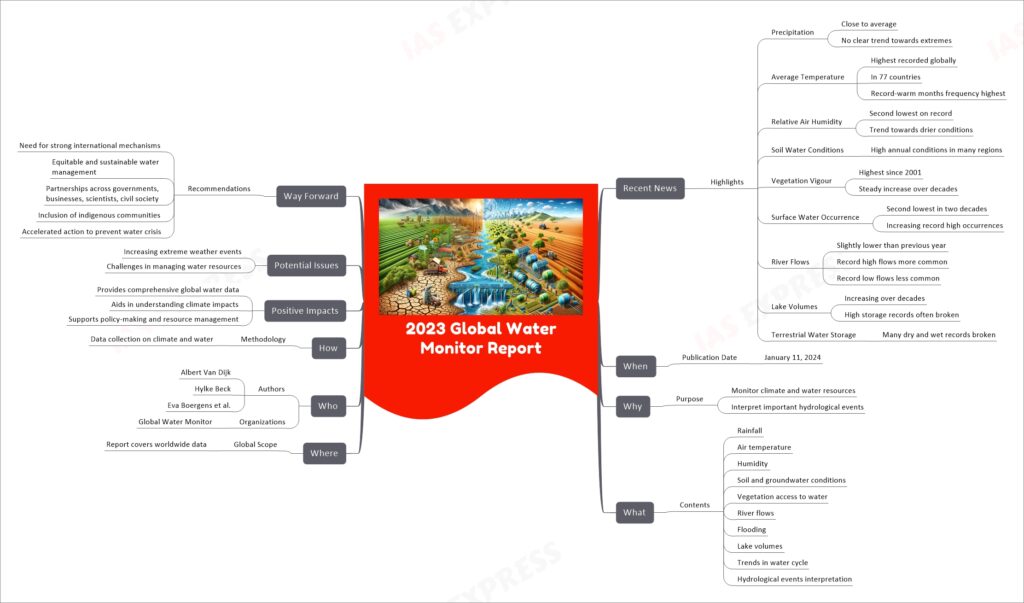2023 Global Water Monitor Report

The 2023 Global Water Monitor Report provides a comprehensive analysis of global water resources, focusing on climate and water data such as rainfall, air temperature, humidity, soil and groundwater conditions, vegetation access to water, river flows, flooding, and lake volumes. The report highlights the highest recorded average global temperature, the trend towards drier conditions, and the increasing frequency of extreme weather events. It underscores the necessity for strong international mechanisms, equitable and sustainable water management, and the importance of partnerships across various sectors, including governments, businesses, scientists, civil society, and indigenous communities, to prevent a global water crisis. The report is a crucial tool for understanding the impacts of climate change on water resources and for aiding policy-making and resource management.
If you like this post, please share your feedback in the comments section below so that we will upload more posts like this.

